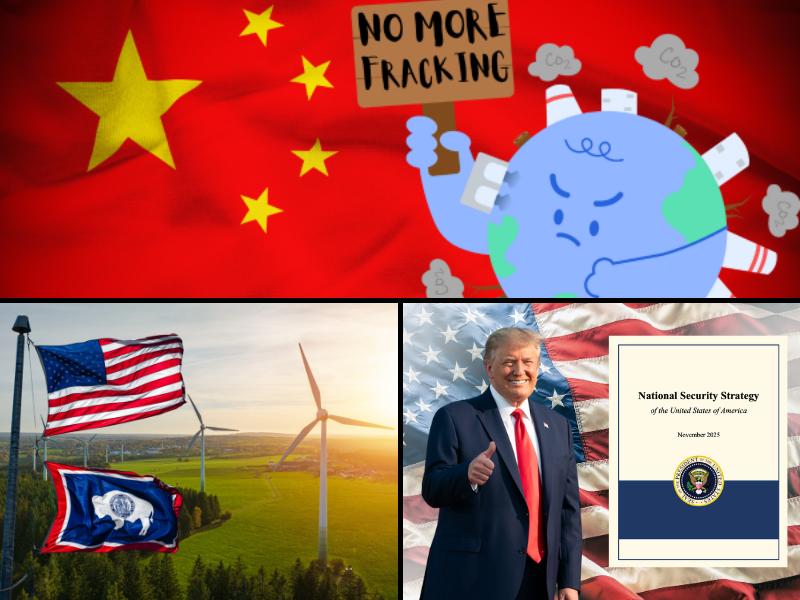The construction of North America’s largest wind power project hinges in part on funding from the federal government.
President Donald Trump’s administration inherited the massive project from the administration of former President Barack Obama, which finalized environmental reviews for the first phase of the Chokecherry and Sierra Madre and TransWest Express projects in the waning days of Obama’s presidency. The combined projects would build 700 miles of transmission lines across public and private land, delivering power from a proposed 1,000 turbine wind farms in Wyoming to electric power utilities in southern California.
The developers have requested federal taxpayer support through the Western Area Power Administration to complete the project, saying it should be funded as part of the $1 trillion in infrastructure spending Trump has advocated.
Funding in Question
With the election of Trump to the presidency, federal funding for the project, expected under Obama, has been thrown into question. In speeches and interviews, Trump has been critical of large wind farms for their impact on birds and other wildlife, and he has criticized renewable energy subsidies. Trump has also been a strong advocate for the expanded use of fossil fuels for electric power generation.
The project has the backing of some other prominent Republicans, including Wyoming Gov. Matt Mead (R). Trump, for his part, has been a strong advocate for increased infrastructure spending and the jobs it brings. A June 7 blog on the White House website, touting six infrastructure projects the Trump administration says would deliver public benefits, included the transmission line project, stating, “at peak construction the project will create between 1,035 and 1,550 jobs.”
‘Expensive, Unreliable’ Power Source
Timothy Benson, a policy analyst with The Heartland Institute, which publishes Environment & Climate News, says wind farms are not justifiable as infrastructure projects.
“If President Trump and officials in his administration want to get heavily involved in funding infrastructure, more power to them, but they should do so while avoiding throwing money at useless projects like wind farms,” Benson said. “Wind energy is twice as expensive as conventional power, intermittent, unreliable, and totally unable to compete economically without the billions of dollars in subsidies and mandated marketplaces it receives.”
Questions Job, CO2 Claims
John Droz, director of the Alliance for Wise Energy Decisions, says there is little evidence to support the popularly held belief electric power generated from wind farms reduces greenhouse gas emissions.
“That is typical of the misinformation floating about,” said Droz. “There is zero scientific proof wind energy saves any consequential carbon dioxide emissions. In fact, there is some evidence wind energy actually increases carbon dioxide emissions overall,” Droz said.
Although many environmentalists and economists say clean energy creates jobs, Droz says wind energy reduces employment.
“Concerning the jobs claims, in every analysis I’ve seen, wind energy has been a net economic and job liability,” said Droz. “The bottom line: Supporting this project and those like it would be a poor policy decision, and the Trump administration should be made aware of that.”
Droz says job creation claims are often dubious.
“In my opinion, energy expert and attorney Chris Horner has the perfect answer for such nonsense: ‘There is nothing—no program, no hobby, no vice, no crime, that does not create jobs; tsunamis, computer viruses, and shooting convenience store clerks all create jobs,'” Droz quoted Horner as saying. “‘So, the jobs claim misses the point.'”
‘Sleight-of-Hand’
Droz says electric power sources should be chosen based on their reliability and costs.
“Instead of jobs, our electrical energy sources should be chosen because of their reliability, true cost to ratepayers and taxpayers, and proximity to demand centers,” said Droz. “Wind and solar energy fare poorly on all such metrics, which is why renewable advocates try the sleight-of-hand tactic to talk instead about jobs.”
Robert Bradley, CEO of the Institute for Energy Research, says attempting to create jobs through force of law harms the economy.
“Something can create jobs, but if it’s not consumer-directed, then it creates economic inefficiencies,” said Bradley. “Funding this project would be very peculiar for an administration that otherwise is reversing course on Obama’s statist energy policies.”
Conflicting Policies
Bradley says it would be uncharacteristic of the Trump administration to fund this large wind project.
“It is also ironic, given the Department of Energy has proposed subsidizing baseload electrical generation from coal and nuclear power, a proposal that reflects the damage intermittent wind power is doing to the coal and nuclear industries,” Bradley said. “Government-backed wind power distorts energy markets because it forces owners of coal or nuclear plants to compete against a resource that’s selling its power at an artificially low price, causing economic harm to baseload power plant operators.”
“U.S. Energy Secretary Rick Perry has proposed providing support for coal and nuclear plants for their ability to store fuel on-site for use when other power sources are lacking,” said Bradley. “The irony here is if the Trump administration ultimately supports this wind project, it will be exacerbating the problem facing baseload power sources, a problem they have proposed remedying by providing support for coal and nuclear energy.”
Savannah Edgens ([email protected]) writes from Gainesville, Florida.



